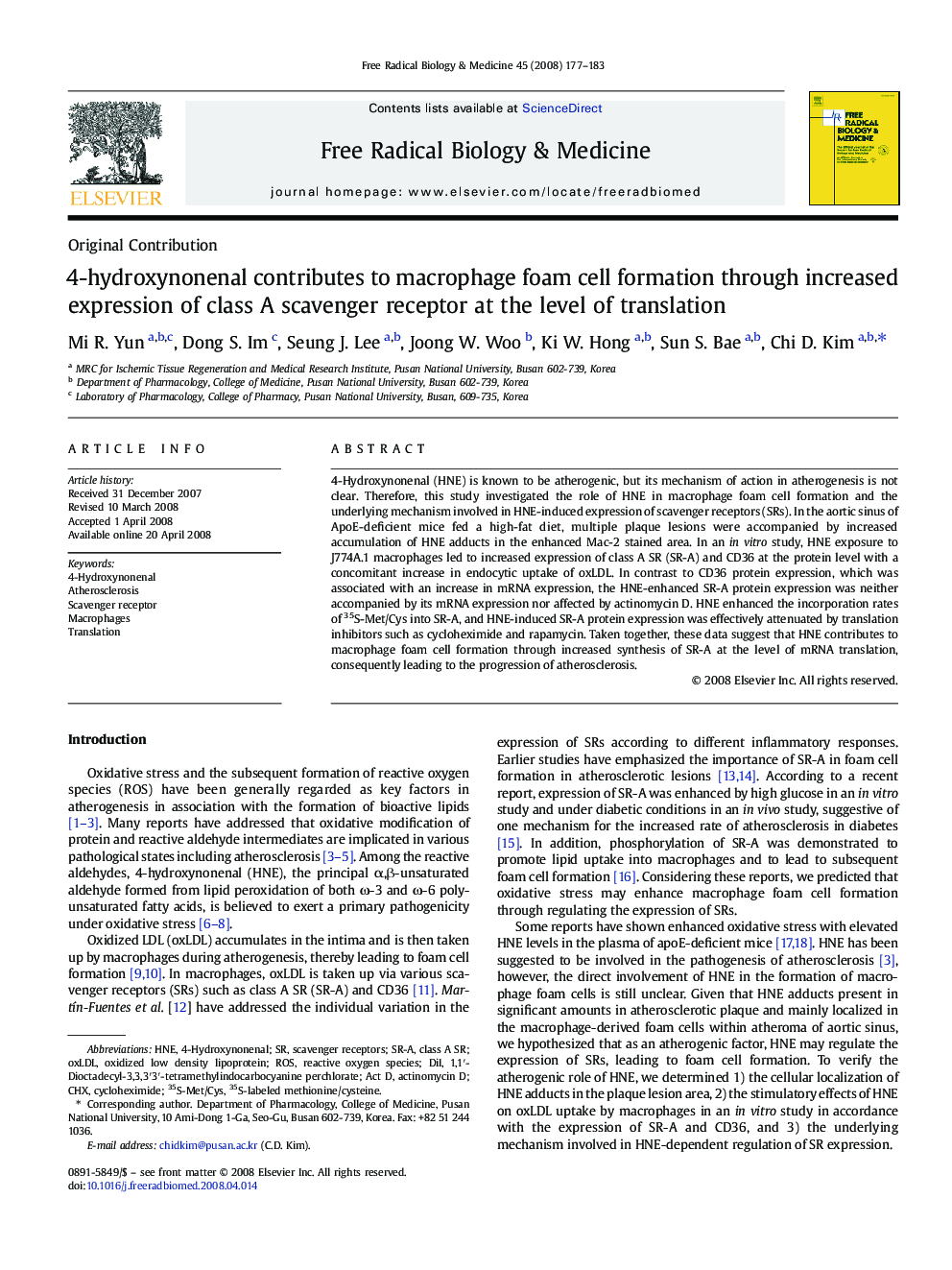| کد مقاله | کد نشریه | سال انتشار | مقاله انگلیسی | نسخه تمام متن |
|---|---|---|---|---|
| 1910820 | 1046788 | 2008 | 7 صفحه PDF | دانلود رایگان |

4-Hydroxynonenal (HNE) is known to be atherogenic, but its mechanism of action in atherogenesis is not clear. Therefore, this study investigated the role of HNE in macrophage foam cell formation and the underlying mechanism involved in HNE-induced expression of scavenger receptors (SRs). In the aortic sinus of ApoE-deficient mice fed a high-fat diet, multiple plaque lesions were accompanied by increased accumulation of HNE adducts in the enhanced Mac-2 stained area. In an in vitro study, HNE exposure to J774A.1 macrophages led to increased expression of class A SR (SR-A) and CD36 at the protein level with a concomitant increase in endocytic uptake of oxLDL. In contrast to CD36 protein expression, which was associated with an increase in mRNA expression, the HNE-enhanced SR-A protein expression was neither accompanied by its mRNA expression nor affected by actinomycin D. HNE enhanced the incorporation rates of 35S-Met/Cys into SR-A, and HNE-induced SR-A protein expression was effectively attenuated by translation inhibitors such as cycloheximide and rapamycin. Taken together, these data suggest that HNE contributes to macrophage foam cell formation through increased synthesis of SR-A at the level of mRNA translation, consequently leading to the progression of atherosclerosis.
Journal: Free Radical Biology and Medicine - Volume 45, Issue 2, 15 July 2008, Pages 177–183